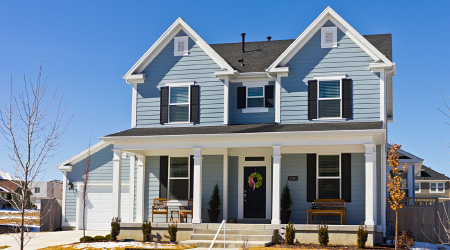Risks You Should Watch For When Buying a Home

It's easy to walk in the door of a home and fall in love with it. It might have your dream kitchen, gleaming hardwood floors, the perfect open floor plan and that jetted tub you have been dreaming of. But that home could also have some hidden risks that you need to know about before you buy. Not knowing could mean higher home insurance rates, or even a home that doesn't qualify for the best policy. Keep an eye out for these risks, some of which are more obvious than others, when you're hunting for the perfect home.
Look Up - To the Roof
A damaged or aging roof can very quickly become an insurance claim, and insurance companies see them as a major red flag. Make sure that the roof of the home you purchase is in good condition before you buy, and find out how long ago it was replaced if you are buying an older home.
It's also important to look into the type of roof on the home. Some insurance companies may charge differently for different types of roofing material as they may consider them to be at a higher risk of a fire. Have the roof on your potential new home inspected by an expert before you buy, so you don't wind up with any surprises after you sign the paperwork.
The Type of Wiring
Some old types of home wiring are more prone to wear and can even be a fire hazard. Not surprisingly, insurance companies are wary of insuring homes with this type of wiring. There have been a number of different wiring types used over the years, so you are looking at an older home, be sure to find out what type of wiring it has.
Homes built before 1930 could have a knob and tube wiring system. Armored cable replaced this system in the following decades. Other types of wiring that might be used include plastic-cheated double wires and aluminum wires. While old wiring in good condition might be safe, the older it is the more prone it is to wear and damage. Any older home should undergo a thorough inspection of the wiring system, and may require major repairs or complete updating.
The Plumbing
Although old pipes are not quite as prone to problems as wiring, they can suffer wear and tear and can become damaged. Leaking pipes may go for years without being discovered, especially if the leak is a small, slow one. By the time it's uncovered, the water damage and mold can be extensive.
It's important to have the plumbing inspected to ensure that everything is in good working order. You'll want to check all of the faucets and toilets for leaks as well. Water damage is one of those difficult areas on home insurance; you may not have any coverage for the type of damage caused by a slow leak, so be sure to check for them up front.
The Pool
You may see that swimming pool and dream of lazy summer days spent floating on the surface, but your insurance company may see it as a risk. Pools come with the risk of injuries and worse, and insurance companies may require that certain safety measures be in place before they will cover your home for the liability risks of a pool. This may include a certain fence height, and it could cost you thousands to have to complete replace a fence, among other upgrades.
Bear in mind that even a pool that is up to date and meets all safety standards is may cost more on your home owner's insurance since it still carries more risk than a home with no pool.
Always Do a Thorough Inspection
These risks are some of the most common and can be very serious, but they certainly aren't the only ones. It's important to always have any home you're considering buying go through a full home inspection done by a professional. This will uncover any hidden risks that could cost you a lot of money in the future or be a danger to you and your family.
The inspection report will help your insurance company to give you a fair rate, and it will also give you peace of mind about your new home purchase. Some risks can be repaired before the purchase is complete so that you can still have your dream home. Only it will be a safer version of it that will be a great place to live for many years to come.







